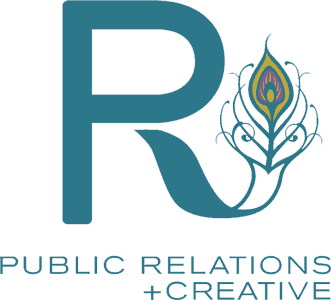Investing in public relations (PR) helps you maintain a positive relationship with the public. A well-executed PR campaign can help you manage your brand’s reputation, boost product awareness, generate leads, and drive sales. However, choosing an optimal budget to achieve the best ROI is challenging for most businesses. What percentage of your marketing budget should you allocate to PR? Should you invest in digital PR or a mix of digital and traditional PR? In this article, we’ll address questions like these and other factors to consider when deciding how much to invest in PR.
How Much Investment in PR Is Optimal?
The optimal PR budget to drive good results varies for different businesses and industries. For example, a small business in the transportation industry may commit less than 5% of revenue to PR with success, while a tech startup may need a much higher percentage to make an impact in that industry. However, as a guide, it’s most common for companies to invest between 1-20% of revenue on the budget, with million-dollar brands often spending between $250,000 to $25 million annually on PR activities.
5 Factors To Consider in Determining Your Brand’s PR Budget
Investing in PR can be tricky; you don’t want to under-budget or over-commit. However, these key factors can help you determine the optimal budget for your brand.
1. Company Revenue

Your company’s gross revenue can help determine how much you allocate to activities such as PR, procurement, R&D, and others. For example, a brand with an annual gross income of $10 million will certainly have less allocated to marketing than a $100 million company. Start with your gross revenue, then track the ROI on your current PR activities, if any, to help guide your decision to increase or reduce the budget.
2. Brand Goals

Your brand’s goals will guide your business’ general approach. This will include choosing your PR strategy, channels, tools, and team structure. For example, if a goal is to build brand awareness, PR strategies like thought leadership and press releases will be effective. You also have to choose between paid distribution channels or organic channels.
You also have to consider the frequency of the content type. For example, if you publish five press releases monthly at $300 per distribution, you will need a $1500 monthly budget for press releases. However, if you include other PR strategies to achieve your awareness goals, your budget will increase to accommodate the extra cost.
3. PR Team Structure

PR team structures can vary significantly across different businesses. Some companies may have in-house PR departments, while others outsource their PR needs to specialized agencies. A hybrid approach is also possible, where a business combines in-house and outsourced resources to manage PR activities.
The chosen PR team structure will impact the investment required for PR activities. For instance, when outsourcing to a PR agency, a business might need to budget anywhere from a few thousand to over $10,000 monthly for their services, depending on the agency’s size and expertise. In a hybrid model, additional costs may be incurred from hiring an in-house manager to liaise with the PR agency. The most expensive option would be to staff an in-house PR team.
4. Industry PR Trends
Some industries require more investment in reputation management and marketing than others. For example, a typical transportation agency has a minimum PR spend of less than 5% since most of its business relies on existing customer relationships. In contrast, tech startups might invest up to 15% of their revenue in marketing activities. It’s best to research your industry to identify PR trends, like effective strategies, best channels, and competitor approaches. All of this information will help you get a holistic view of what an optimal budget will look like. If you don’t know how to research your industry, contact a professional PR agency for assistance.
5. Type of PR Activities
Digital PR has been on the rise lately, with some businesses investing entirely in it while others merge digital with traditional PR. For example, a digital-only PR strategy will include email, social media, SEO, link building, and content marketing strategy. However, a hybrid structure will consist of press releases, interviews, and events, as well. With either of these approaches, you can take advantage of earned media opportunities which are organic brand mentions that are much more budget-friendly than paid media. But the mix of activities that will work best depends on the most effective way to reach your target audience and your goals.
Partner with PR Agency to Maximize Your ROI
Generally, determining how much you should invest in PR activities depends on your company’s revenue, industry, brand goals, team structure, and the type of PR activities that best support your goals. Regardless of your decision, one fact is undisputed—PR is vital to successful brand marketing. Investing in PR can lead to brand loyalty, boost awareness and sales, and help establish your brand as a reputable company in your industry. However, creating a budget is a small part of your success curve; you must also invest in the right strategies, tools, and teams.
At RPR Firm, we have over a decade of experience managing PR campaigns for businesses in different industries. Schedule a free consultation with us today to see how our professional PR services can maximize the return on your investment in PR.
